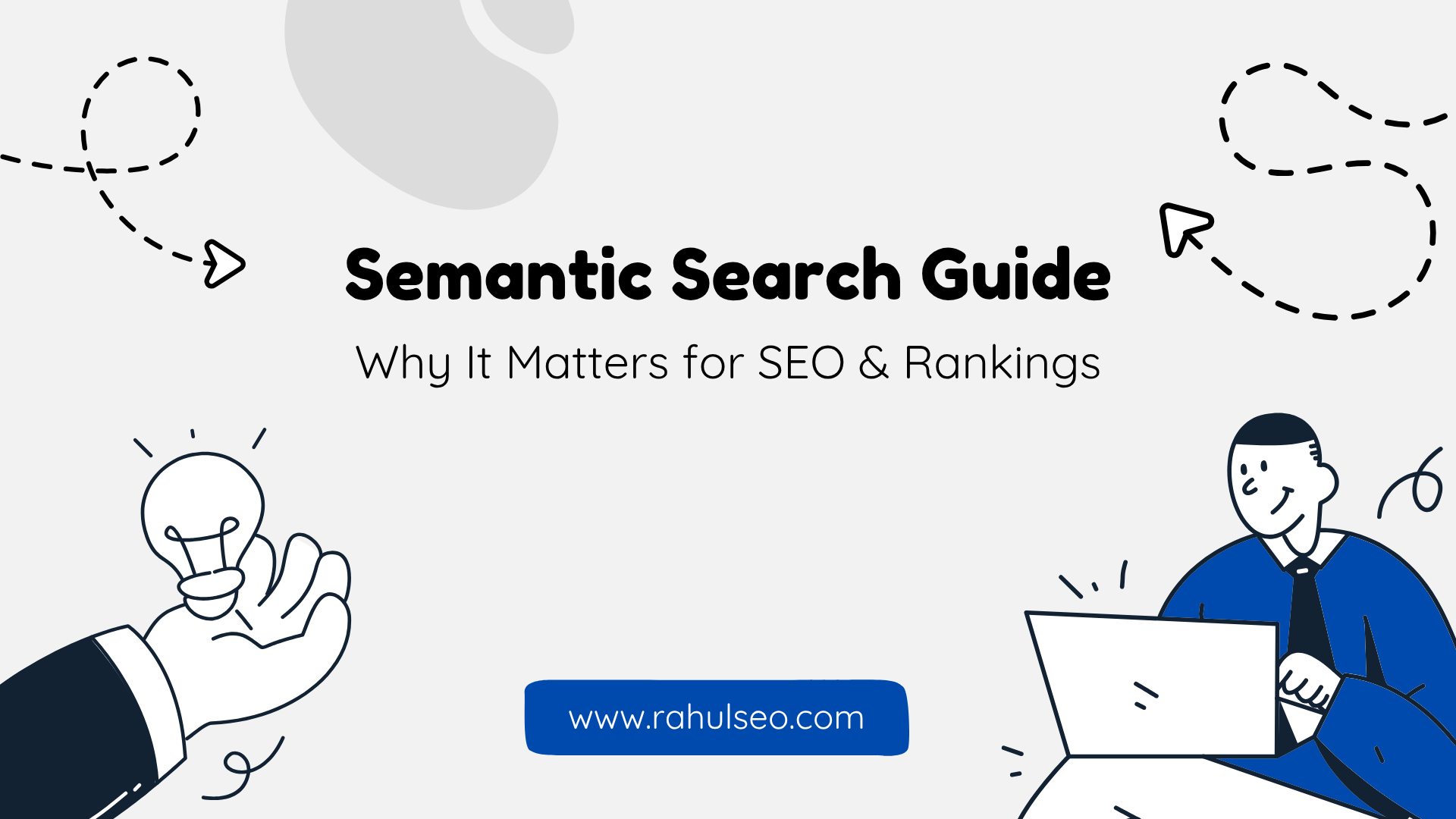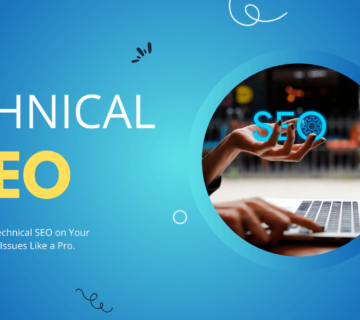Have you ever searched for something online and felt like Google just knew what you were thinking, even if your query was a bit vague? That’s the power of semantic search at play. Gone are the days when search engines simply matched keywords. Today, they aim to understand the meaning and intent behind your words, delivering highly relevant results. If you’re struggling to get your content seen, or your audience isn’t finding what they need, a shift to semantic SEO could be your game-changer. This article will demystify semantic search and reveal why it’s not just a buzzword, but a crucial element for your SEO success in the current digital landscape.
What Exactly is Semantic Search?
Semantic search is a data searching technique that goes beyond simple keyword matching. Instead, it focuses on understanding the contextual meaning and user intent behind a search query. Think of it like this: rather than just finding pages with the exact words you typed, a semantic search engine tries to comprehend what you really mean and what information you’re truly seeking. This involves analyzing the relationships between words, the searcher’s location, previous searches, and the broader context to deliver the most relevant results possible.
Keyword Search vs. Semantic Search: The Key Difference
To truly grasp semantic search, it’s helpful to compare it to the “old way” of keyword searching:
| Feature | Keyword Search | Semantic Search |
| Focus | Exact word-for-word matches | Meaning, context, and user intent |
| Understanding | Literal interpretation of query | Deeper comprehension of natural language |
| Results | Can be less relevant, may require multiple tries | Highly relevant, aims to satisfy query on the first attempt |
| Example | “Apple” -> Returns pages with “apple” (fruit, company, record label) | “Apple” (if you searched “new phone”) -> Returns Apple Inc. products Export to Sheets |
How Do Search Engines Understand Semantics?
Modern search engines, particularly Google, employ sophisticated technologies to understand semantics:
Natural Language Processing (NLP)
NLP is a field of artificial intelligence that enables computers to understand, interpret, and generate human language. For semantic search, NLP helps engines:
- Analyze queries: Breaking down sentences, identifying parts of speech, and recognizing entities (people, places, things).
- Interpret intent: Deciphering the underlying goal of the searcher (e.g., informational, navigational, transactional).
Knowledge Graphs
Knowledge Graphs are vast, interconnected databases of entities (concepts, objects, people) and their relationships. Google’s Knowledge Graph, for instance, allows the search engine to:
Provide direct answers: Often seen in featured snippets or knowledge panels, delivering information directly without needing to click through.
Connect concepts: Understand that “Eiffel Tower” is a landmark in “Paris,” which is the capital of “France.”
User Intent
Understanding user intent is paramount. Search engines analyze:
- Query type: Is the user looking for information, a specific website, or to make a purchase?
- Past behavior: Previous searches, clicks, and interactions.
- Contextual clues: Location, time of day, device used, and current trends.
Why Semantic Search Matters for Your SEO Strategy
Ignoring semantic search means falling behind. Here’s why it’s critical for your SEO:
Improved Relevance and User Experience
By understanding the true meaning behind queries, search engines deliver more precise and useful results. This means users find what they’re looking for faster, leading to:
- Higher satisfaction.
- Reduced frustration.
- Increased likelihood of engaging with your content.
Higher Rankings and Increased Visibility
When your content semantically aligns with a user’s intent, even if the exact keywords aren’t used, your pages are more likely to rank. This means you can:
- Capture traffic for a wider range of related long-tail queries.
- Establish yourself as an authority on a topic.
Opportunity for Rich Results and Featured Snippets
Semantic understanding helps search engines identify and extract answers for rich results (e.g., star ratings, recipes) and featured snippets (direct answers at the top of the SERP). Optimizing for these can significantly boost your visibility and click-through rates.
Better Adaptation to Voice Search
Voice queries are inherently conversational and long-tail. Semantic search’s ability to understand natural language makes your content more discoverable for voice assistants, which are becoming increasingly prevalent.
Building Topical Authority
Instead of optimizing for isolated keywords, semantic SEO encourages you to cover topics comprehensively. By creating interconnected content clusters around a central theme, you signal to search engines that you are a definitive source of information, boosting your overall domain authority.
How to Optimize Your Content for Semantic Search
Adapting to semantic search requires a shift in mindset from keyword-stuffing to holistic content creation:
Focus on Topics, Not Just Keywords
- In-depth Research: Go beyond simple keyword tools. Use “People Also Ask” sections, related searches, and forums to understand the full scope of user questions around a topic.
- Topic Clusters & Pillar Pages: Organize your content into comprehensive pillar pages (broad topics) supported by cluster content (specific subtopics) linked together.
Create Comprehensive and In-Depth Content
- Answer all questions: Ensure your content thoroughly answers common questions related to your main topic and subtopics.
- Provide value: Offer unique insights, data, and actionable advice that genuinely helps your audience.
Leverage Semantic HTML and Structured Data
- Semantic HTML5: Use appropriate HTML tags (e.g.,
<article>,<section>,<nav>,<aside>,<footer>) to give meaning to your content’s structure. - Schema Markup: Implement structured data (Schema.org) to explicitly tell search engines what your content is about (e.g., product, recipe, FAQPage). This greatly enhances your chances of winning rich results.
Build Strong Internal Linking Structures
- Contextual Links: Link related articles within your site using descriptive, relevant anchor text.
- Hierarchy & Flow: Ensure internal links help users (and crawlers) navigate logically through your content, reinforcing topical connections.
Address User Intent Thoroughly
- Identify Intent: For each piece of content, clearly define the primary user intent (informational, navigational, transactional, commercial investigation).
- Match Content to Intent: Tailor your content’s format, depth, and tone to precisely match the identified intent. For example, a “how-to” guide for informational intent, or a “best products” list for commercial investigation.
FAQs about Semantic Search and SEO
Q1: Is semantic search just another name for AI in SEO?
A1: While semantic search heavily relies on AI technologies like Natural Language Processing (NLP) and Machine Learning (ML), it’s more specific. It’s the application of AI to understand the meaning and context of search queries and content.
Q2: Does keyword research still matter with semantic search?
A2: Absolutely! Keyword research is still fundamental, but its purpose shifts. Instead of just finding high-volume keywords, you use it to uncover the full range of related topics, subtopics, and long-tail queries that define a semantic topic.
Q3: How long does it take to see results from semantic SEO?
A3: Semantic SEO is a long-term strategy. Building topical authority and achieving deep understanding from search engines takes time, consistent effort, and high-quality content. You might see initial improvements from structured data and content comprehensiveness within weeks, but significant shifts often take months.
Q4: Can I use semantic search principles on my internal site search?
A4: Yes, absolutely! Implementing semantic search principles on your internal site search can significantly improve user experience, helping your visitors find products, articles, or information more quickly and efficiently, which can lead to higher engagement and conversions.
Conclusion: Embrace Semantic SEO for Future-Proof Success
Semantic search represents a profound evolution in how search engines operate and how users find information. By shifting your focus from isolated keywords to understanding the holistic meaning and intent behind search queries, you can create content that not only ranks higher but also genuinely serves your audience. Embracing semantic SEO through comprehensive content, structured data, intelligent internal linking, and a deep understanding of user intent is no longer optional; it’s the pathway to future-proof your digital presence and achieve sustainable growth.
Rahul Tripathi is a seasoned Digital Marketing Expert from India with over 14 years of industry experience. He holds a Bachelor of Commerce from Gujarat University and a Postgraduate Diploma in Digital Marketing from GTU.
Rahul specializes in driving business growth through data-driven strategies that generate high-quality leads, boost sales, and maximize ROI. With a deep understanding of SEO, performance marketing, and brand positioning, he is passionate about helping businesses enhance their online visibility and build a lasting digital presence.





